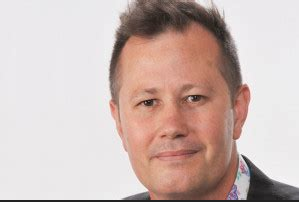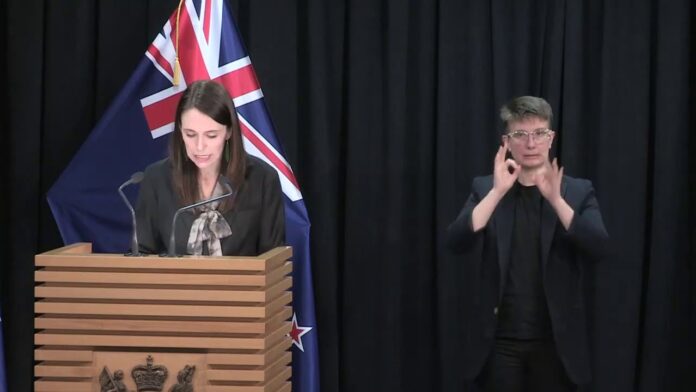Analysis by Dr Bryce Edwards

Inequality and poverty look to be the forgotten issues of the election campaign, with not much more than lip-service being paid to them on the campaign trail. Yet decisions are currently being made that appear to be fuelling a greater gap between rich and poor.
Newsroom’s Bernard Hickey has tweeted this week to sum up how the Government has chosen to manage the Covid-19 health and economic crisis: “This Covid-19 response has all been about bailing out property owners, helping banks, propping up zombie small businesses, big grants and loans to well-connected big businesses and middle class welfare via special Covid dole to higher-paid jobless. Not a team of 5 million at all.”
Hickey has elaborated on this in a column, saying the Government has made policy choices that have advantaged the rich and disadvantaged the poor, which will fuel higher levels of inequality: “without debate, the Labour-led Government has delivered the biggest shot of cash and monetary support to the wealthy in the history of New Zealand, while giving nothing to the renters, the jobless, students, migrants and the working poor who mostly voted it in” – see: NZ’s ‘K’ shaped Covid-19 recovery.
On the one hand, the Government “decided early on in the crisis, unlike others including Australia and America, not to pump Government cash to citizens directly and widely, but instead to target cash at businesses. That meant New Zealand’s renters, the already jobless and the working poor received none of the tens of billions of dollars handed out by the Treasury and printed by the Reserve Bank.”
On the other hand, Hickey argues that the wealthy have been looked after by the Government by the corporate wage subsidy scheme, as well as “relying on the independent central bank to do most of the heavy lifting, which has meant lowering mortgage rates and pumping up asset values so property owners might spend and invest more.” This has increased asset prices.
In terms of housing, “prices have actually risen 3.7 percent between the end of March and the end of July, according to the CoreLogic House Price Index. That has added $45 billion to the value of housing in New Zealand, taking it up to a record-high $1.272 trillion.”
Hickey has also written today about housing inequality, arguing that the Government has chosen to prioritise the housing market in order to prevent a crash in values – see: Our housing market is too big to fail (paywalled). He believes the Government has chosen not to embark on “massive state house building”, nor implement a capital gains tax, because these might upset wealthy property owners.
Instead, the Reserve Bank has been left to deal with housing: “Just as it did during the GFC, the Reserve Bank extended emergency credit lines to banks and slashed interest rates to support both the financial system and the economy. Almost automatically, that made housing more valuable, given home buyers can borrow more to increase the offer price and rental property investors can make bigger profits, given rents have kept rising almost everywhere (except Queenstown).” And he argues that the Reserve Bank’s own studies show that their money-printing plans “could pump another 20-30 percent into house prices.”
Similarly, this week the anti-inequality pressure group Closing The Gaps, has spoken out about the impact of quantitative easing, saying that it is increasing inequality: “While the wage subsidy is neutral in its effect on inequality or slightly advantageous depending on the ‘top up’ from employers, quantitative easing is exacerbating inequality… Banks are receiving the funds from the Reserve Bank to lend to New Zealanders. But the money is mostly going to the already rich” – see: Government Covid-19 recovery policy good but…
They argue that quantitative easing is increasing the value of assets owned by the wealthy, and the Government is forgoing putting money in the hands of those who need it: “Where banks lend to the well-heeled, the money tends to flows into investments such as property markets and the share market, all of which seem to be appreciating in value and really do nothing for the economy. Instead of an ill-considered boost to capital markets from quantitative easing, the money would be better channelled directly into household incomes, particularly for medium and low income earners. The wage subsidies and some increases to benefits are a help but they are not enough. Direct grants to families would be a much better approach.”
Many New Zealanders share these concerns. Market survey firm Ipsos NZ regularly poll New Zealanders on what are the most important political issues. Their most recent report showed this: “The top three issues facing New Zealanders in May 2020 are the economy, followed by unemployment with housing / cost of housing in third position. Healthcare / hospitals and poverty / inequality occupied the fourth and fifth positions respectively” – see: Economy and unemployment sky-rocket as top two issues – Ipsos NZ.
Interestingly, 24% of New Zealanders stated that poverty and inequality was a top issue, compared to only 14% of Australians. In that country, the centre-right Scott Morrison Government has arguably done much more to counter inequality during the Covid-19 crisis than the New Zealand government. This was a point made by welfare researcher Michael Fletcher in June – see: Kindness doesn’t begin at home: Jacinda Ardern’s support for beneficiaries lags well behind Australia’s.
Fletcher points to the more generous scheme for beneficiaries in that country: “the Morrison government introduced the temporary Coronavirus Supplement, an additional payment of A$225 a week to all existing and new beneficiaries. It applies for six months from late April.” In contrast, the New Zealand Government has kept benefit levels the same while introducing a payment of twice the benefit rate for those who are made redundant. Fletcher comments that former Labour prime ministers would be rolling in their grave over the inequity of it.
Leftwing bloggers have also been extremely unhappy about Labour’s orientation to beneficiaries during Covid – No Right Turn stated bluntly: Labour doesn’t care about the already poor.
Here’s the blogger’s analysis of Labour’s current orientation to inequality: “While they talk about ‘kindness’ and ‘wellbeing’, when push comes to shove, they’re happy with existing inequalities, happy even to exacerbate them, happy with the underclass Roger Douglas and Ruth Richardson created, happy with the status quo and all its injustices. Because doing anything about any of those problems would mean them having to pay more tax on their $180K+ salaries, or on their property portfolios or family trusts, and that seems to be something which is simply unthinkable to them now.”
The extent of poverty in New Zealand can be seen in the continued existence of rheumatic fever here, which is a disease of poverty that other developed nations have eradicated. According to journalist Virginia Fallon, “the current government, and every government, has dropped the ball” on fighting the disease – see her report this week: ‘We have totally failed’: Rheumatic fever: The Third World disease entrenched in New Zealand.
This week has also seen the news that average incomes have fallen for the first time on record – see RNZ’s Median weekly income falls 7.6% to $650. According to this, there has been “a sharp rise in paid employees who reported no hours worked, and no income.”
Not surprisingly, charities are reporting significantly increased demand – see: Demand for Auckland City Mission food parcels increases by 175 per cent. City Missioner Chris Farrelly lays out the impact of poverty: “Families having to decide between the doctor’s visit, bus fare, power bill or food for the kids. More than often, food becomes the discretionary item.”
At the same time, businesses have been paid over $13bn in wage subsidies, including those laying off workers and those paying no tax – see Nita Blake-Persen’s $2b in wage subsidies for businesses that have not paid company tax.
Of course, the problems of inequality and poverty aren’t simply down to the Covid-19 crisis. At the last election, Labour, the Greens and NZ First campaigned strongly on inequality, pointing out that under nine years of National things had got worse for the poor and working people in a variety of ways.
Have these parties actually made a significant difference during their three years in power? There are signs that things haven’t improved much at all. The Government has largely chosen not to transform the economy or redistribute wealth in any meaningful way.
This was reflected in February when the official economic statistics were released, showing little change. Financial journalist Brian Fallow reported the details: “Data out this week on household incomes and housing costs make uncomfortable reading for both the Government and the Opposition. A centre-left Government should not be happy that in the year to June 2019 — its first full year in office — it has not moved the dial on income inequality at all. A standard measure of inequality, called the Gini coefficient, at 33.9 is as bad as it has been at any time in National’s last nine years in power and higher than it was before the global financial crisis” – see: Numbers show Government hasn’t moved the dial on income inequality at all (paywalled).
Fallow made the notable comment: “Neither the Government nor the Opposition is offering any plan to change that.”
It’s unclear therefore that there is any real political leadership for change. At the end of last year, ODT journalist Bruce Munro wrote an in-depth feature about the politics and economics of inequality – see: Lines that divide: A Dunedin paper road separates two worlds. In this, he quotes Prof Peter Crampton saying that change might only come with a major crisis or upheaval: “The concentration of wealth now means we probably need catastrophic challenges to that, such as the Great Depression, or a war, or a revolution, or whatever, to change a system with that much entrenched power.”
Even with all the upheaval of 2020, however, it doesn’t seem that the issues of inequality and poverty are anywhere further up the political agenda. In fact, things appear to be going backwards.
Finally, for an extended essay that takes “an unflinching look at the realities of child poverty in New Zealand and the need for a political pathway to change”, it’s worth reading paediatrician Renee Liang’s experiences and observations, published earlier this year – see: Why poverty in New Zealand is everyone’s concern.








